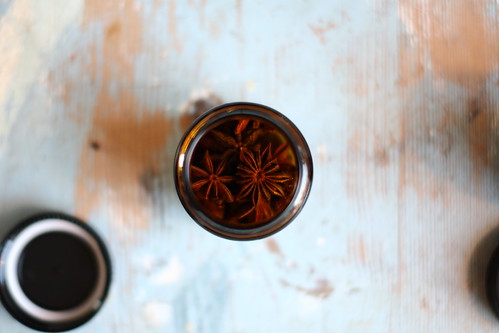The banal children’s chemistry sets of today bear little resemblance to the explosive and incredibly dangerous chemistry sets of old. At home science kits have been around in one form or another since the late 1700s. They may be mere toys now, with no dangerous parts, but they have their roots in real science. It was not until the turn of the 20th century that they started to become popular as a child’s toy.
 Through the years, as we became more cognizant of the dangers many of these ingredients posed to young children, particularly if those children were left unsupervised, the actual number of chemicals found within these sets began to decline. In the meantime, the number of innocuous everyday items increased to replace the lost chemicals. Some sets do still involve experiments with exciting reactions, such as the baking soda and vinegar volcano or kits that allow the creation of candies and perfumes. However, most of the child’s chemistry sets of today are more about demonstration than experimentation. Modern sets tend to contain items like rubber bands, plastic cups, balloons and drinking straws, but it was not always so.
Through the years, as we became more cognizant of the dangers many of these ingredients posed to young children, particularly if those children were left unsupervised, the actual number of chemicals found within these sets began to decline. In the meantime, the number of innocuous everyday items increased to replace the lost chemicals. Some sets do still involve experiments with exciting reactions, such as the baking soda and vinegar volcano or kits that allow the creation of candies and perfumes. However, most of the child’s chemistry sets of today are more about demonstration than experimentation. Modern sets tend to contain items like rubber bands, plastic cups, balloons and drinking straws, but it was not always so.
One of the first such chemistry sets was created by a German scientist named Johann Güttling. It was not necessarily conceived for children, but Güttling did suggest it was to be used for “instruction and amusement.” Perhaps this is why the majority of the earliest British examples of these kits were known by the name “chemical amusement chests” rather than chemistry sets, while only a few were known simply as a “portable” or “youth’s laboratory.”
 The idea of these sets as a toy for children really began to take shape when stage magic was at its peak. Traveling shows featuring conjurers and magicians featured fireworks explosions and people disappearing in puffs of colored smoke. Children were captivated by these special effects and the portable chemistry set gave the children a way to recreate those reactions at home. They weren’t practicing chemistry in their bathrooms and sheds as much as they were making magic.
The idea of these sets as a toy for children really began to take shape when stage magic was at its peak. Traveling shows featuring conjurers and magicians featured fireworks explosions and people disappearing in puffs of colored smoke. Children were captivated by these special effects and the portable chemistry set gave the children a way to recreate those reactions at home. They weren’t practicing chemistry in their bathrooms and sheds as much as they were making magic.
These earliest sets contains dozens of chemicals, as well as laboratory equipment such as a mortar and pestle, weights, funnels and an experiment booklet. The chemicals were not of the safe, kitchen cabinet variety used in modern sets. Some of the chemicals contained in these sets as late as the 1950s included platinum, uranium dust, lye, lead compounds, and even cyanide. While perhaps better known as a deadly poison, cyanide is actually used in gold mining and was included in experiment sets for this purpose. The components for making gunpowder appeared in many amusement chests, as well.
The concern for the safety of the children playing with chemicals is not the sole reason for the change in contents of these boxes. While glass may have been replaced with plastic because plastic doesn’t break, glass is also more expensive to manufacture. Companies can therefore more easily mass-produce kits which contain plastic than they could those with glass. In addition, some of the chemicals formerly found in these kits were not only a danger to the children, but to others when these kits fell into the hands of would-be criminals. Many kits had ingredients that could be used in the creation of illegal drugs, bombs and other weapons.
Tony Galarze is a student currently pursuing a degree in the history of science and philosophy. He contributed this post on behalf of Advance Recruitment, a leader in connecting people with medical sales jobs in the U.K.










Comments